The Offseason: Enjoy your Downtime, and Maintain your Fitness.

Many athletes struggle with the period after a major event, or the final race of the season – known as the off-season. You’ve been so focused on your training for and nailing your event, and likely gotten into a routine of balancing your training programme around work and family. After the event, motivation can dwindle, and it can be tricky to figure out what it is you are trying to do with your training, and even if you should be training at all!
The purpose of the off-season, which is essential, is to physically and mentally freshen up whilst minimising the loss of those hard-earned adaptations you accrued in the build-up to the previous event. You can’t always just keep training; it is necessary to pull back, let any niggles clear, and reconnect with the other aspects of your life that training has dominated! Not taking an off-season leaves you at risk of physically or mentally burning out in the next programme.
In this blog, I will summarise my key recommendations for tackling th...
Right Fuel, Right Time – Carbohydrate Manipulation to Make Every Session Count!
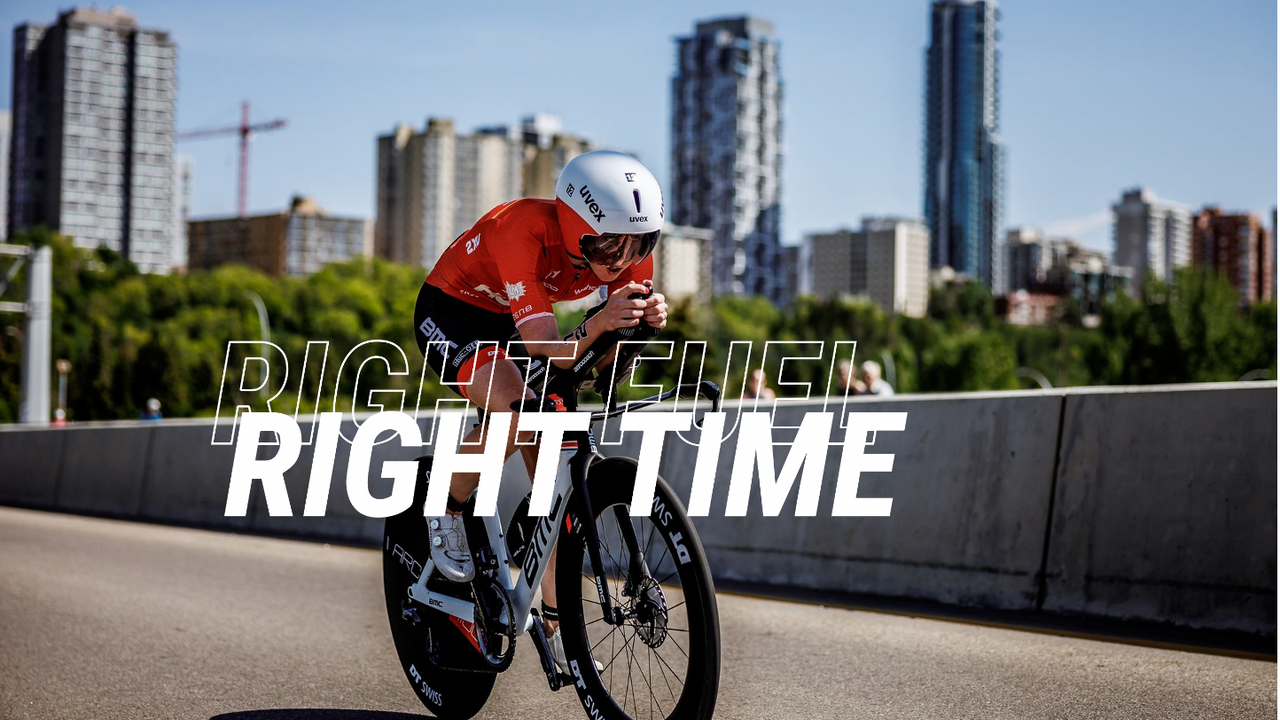
One of the hot topics in endurance sports nutrition at the moment is ‘carbohydrate periodization’ (4, 6).
What is carbohydrate periodization?
Like training periodization, in which we manipulate our training programming to best achieve our training objectives, carbohydrate periodization is a nutrition strategy in which carbohydrate intake is manipulated in line with training demands and to meet the objectives of individual sessions. These objectives may be to maximise acute performance within the session, or to facilitate high-fat oxidation rates, for example. We call this the ‘Right Fuel, Right Time’ approach. The rationale for this approach is that adequate carbohydrates should be consumed to support the quality of training sessions but that we should avoid overconsuming carbohydrates on easier, less demanding days, as this may blunt the signals that lead to positive adaptive responses (3).
In this blog, I will briefly discuss some of the research on the Right Fuel, Right Time appr...
What influences fat metabolism during cycling? Our New Research
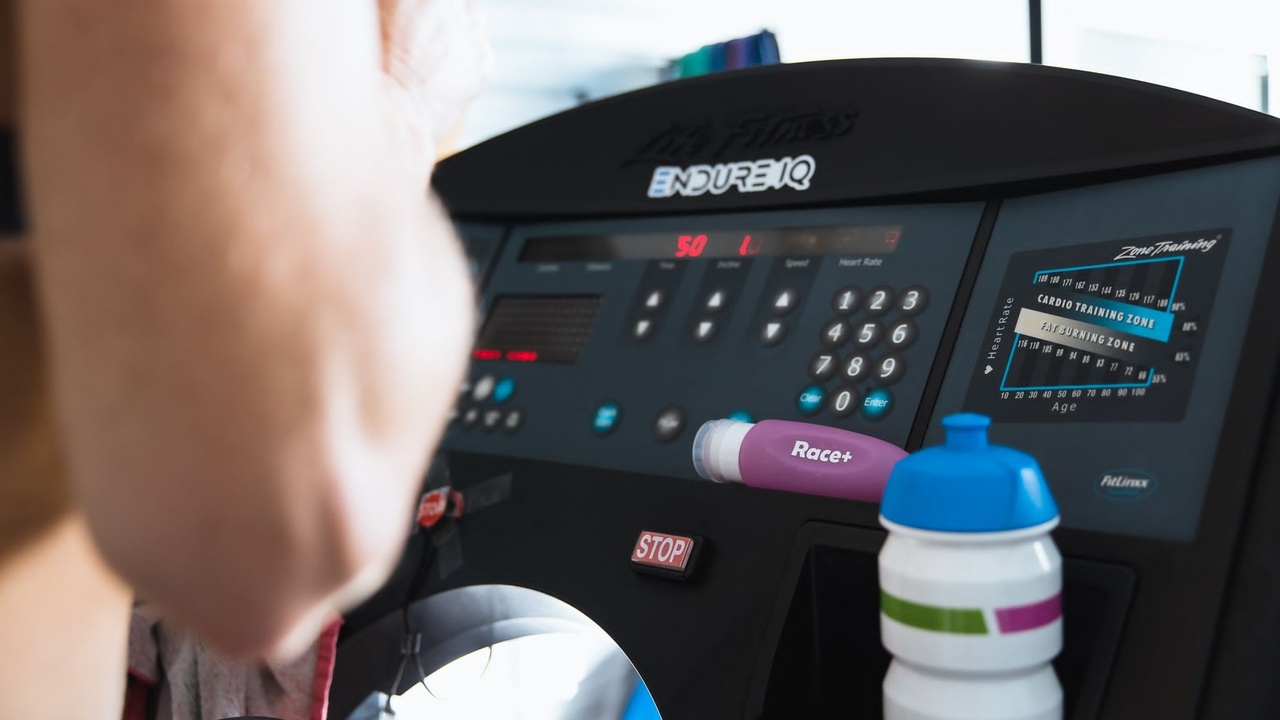
As we have discussed at length in previous blogs, and in our courses, carbohydrates and fats provide the energy to fuel metabolism during prolonged, endurance exercise (3). The carbohydrate energy we have stored in our muscles and liver as glycogen is limited, and can become depleted to low concentrations during long-duration exercises like Ironman triathlon (1, 6). In contrast, our fat energy stores, whilst metabolised more slowly, are effectively limitless in the context of exercise. For example, given that 1 g of fat provides ~9.75 kcal of energy (4), it can be estimated that a lean 70-kg individual with 10% body fat has ~68,250 kcal of endogenous fat energy. Theoretically at least, this is enough energy to complete more than six full-distance Ironman triathlons (5).
Accordingly, exercise physiologists have conducted huge amounts of research into the factors that influence the rates at which we metabolise fats and carbohydrates during exercise. This research has been particularly u...
Sodium intake during endurance events: How precise should we be?

Discussion of electrolyte losses in sweat and the perceived need to supplement with sodium during competition is ubiquitous in endurance sport. Particularly triathletes. According to a recent survey, the vast majority of endurance athletes reported that they think they should be replace sweat sodium losses during racing (5). However, is it really something we need to worry about? In this blog, I will briefly describe the state of the evidence regarding sodium supplementation during endurance competition and outline why I think that ingestion of some sodium during competition is important, but also why I don’t think the majority of endurance athletes need to agonise over the details of their sodium supplementation regimen. If nothing else it’s going to reduce the number of decisions you have to make, so strap in!
Sodium losses in sweat
First things first, what is sodium? Sodium is an electrolyte found in the body and is crucial for many physiological functions. The movement of positiv...
Kona Gems

Written November 2018
Since Kona, it’s been all R and R, and it’s been just amazing and much needed. It’s been an incredible few weeks and crossing that finish line on October 13th felt like standing on the moon. I’m keen to share some thoughts, data and experiences on my #roadtokona, and it’s been nice to have the time to reflect over the past week. What worked, what didn’t and what do I think were some of the critical principles that helped get a result I never thought was possible. This short blog post includes my top three “gems” that I believe had significant contributions. These aren't exclusive to my personal experiences preparing for Kona, but align also to observations I’ve had when working with numerous world and Olympic champions.
1. FOCUS ON THE PROCESS. I don’t believe in the word “sacrifice”. Everything we do is a choice in life, and of course, training is no different. I loved (and still love) every aspect of training. That’s not just the training itself, but also the...
Using Lactate to Prescribe Exercise Intensity: What's the Big Deal?
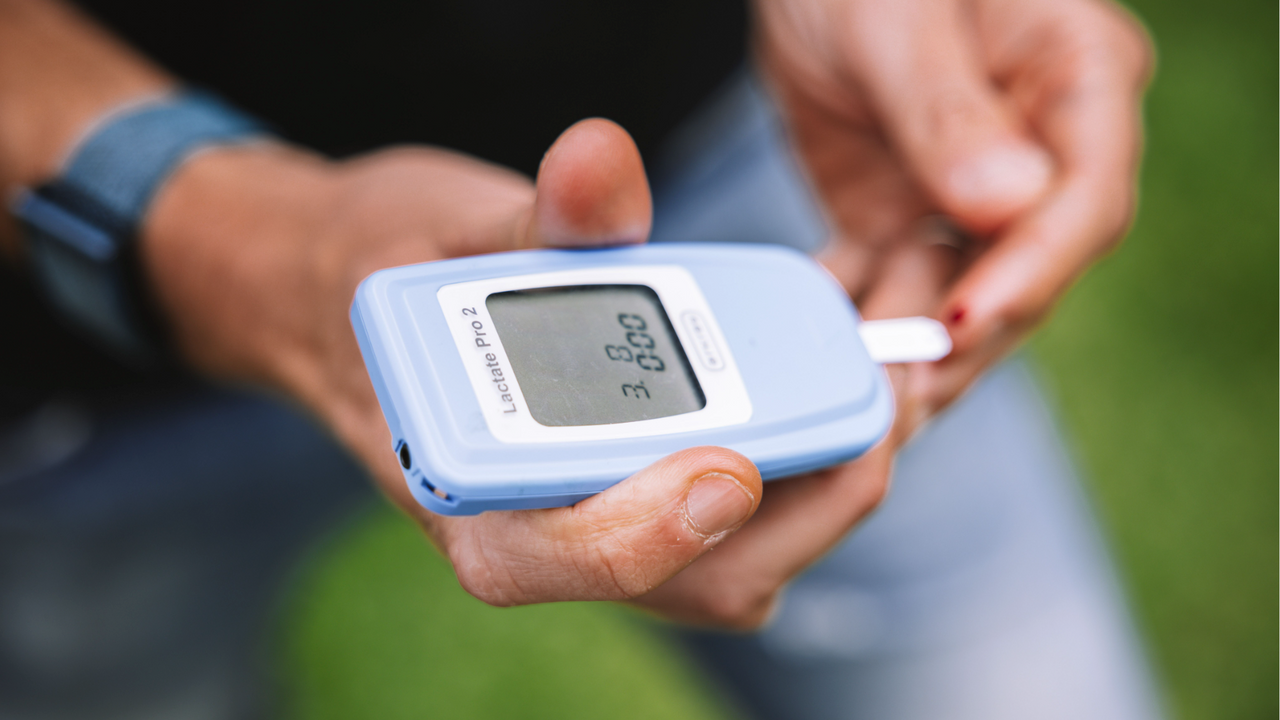
If you’ve been partaking in endurance training for any length of time, you will know that regulating the intensity of training is one of the fundamental components of good preparation. Sometimes we want to perform training at a high intensity in order to drive up stress-related adaptive pathways (2), but, most of the time, we want to keep our intensity low, such that we can accumulate large overall training volumes and avoid becoming non-functionally overreached. As we have discussed before, as long-distance triathletes, we may want ~80% or more of our training week to occur at low physiological intensities below the lactate threshold (7).
To properly execute a specific training session objective – whether that be a low-stress, two-hour bike ride, or threshold run reps – we need to regulate our power outputs or speeds, such that we are physiologically in the right spot and achieving the desired result. Most commonly, athletes will do this using the tracking of external work rates; so,...
Carbohydrate Nutrition: An update on hydrogels and in-race carbohydrate dosing

We discussed the science of carbohydrate ‘hydrogels’ in a previous blog. Carbohydrate hydrogels are regular carbohydrate-containing sports drinks, with pectin and sodium alginate added. Pectin and sodium alginate have little effect until the drink reaches the high acidity of the stomach, where it forms a gel-like mixture. The gel-like mixture allows for a faster pass through the stomach into the intestine – what is called ‘gastric emptying’ – and speeds the rate at which the ingested carbohydrate is available for absorption across the intestine and, theoretically, utilisation as a fuel source by the working muscles.
When I wrote the blog in 2020, a handful of studies looking at the gastrointestinal and metabolic effects of carbohydrate hydrogels had been published. My conclusion at that point was that hydrogels might provide an effective means of accelerating gastric emptying, although the research did not demonstrate positive effects on exogenous carbohydrate availability or gastroin...
Best practice for triathlon coaches: Avoiding overtraining
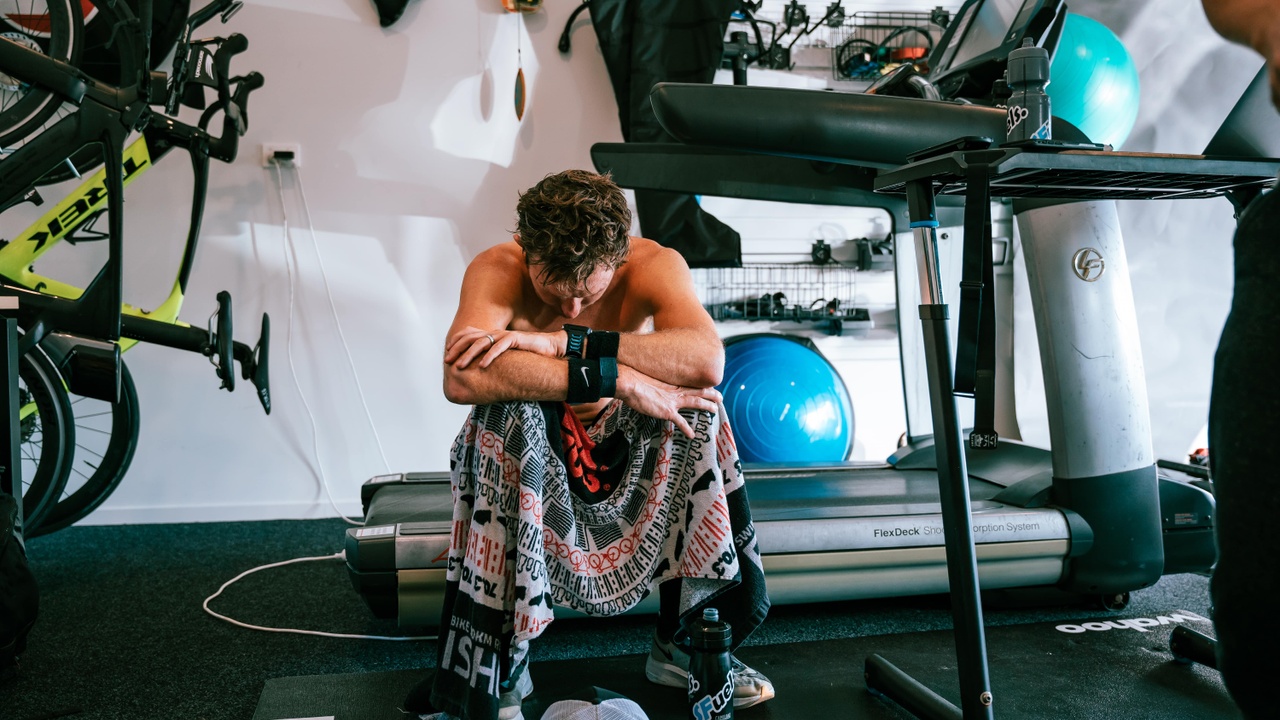
By Dr Dan Plews
Endurance athletes have to manage the stress generated through training with the recovery required to absorb that stress and turn it into positive adaptations. One of the major determinants of the outcome of a training intervention is how successfully stress and recovery are balanced; too little stress and too much recovery could lead to undertraining and the failure to realise potential; too much stress and too little recovery could lead to overtraining, excessive fatigue, and impaired performance. In this blog, we are going to focus on the latter – overtraining – what it is and how to avoid it.
The overtraining continuum
‘Overtraining’ is one of the many ubiquitous and inconsistently defined terms in endurance sport, much like ‘threshold’, and the misuse of the term creates confusion. Oftentimes, when athletes and coaches say that they are overtrained, they are really overreached. I like to refer back to a classic review paper by Shona Halson and Asker Jeukendrup f...
Endure IQ's Hierarchy of Long-Distance Triathlon Needs
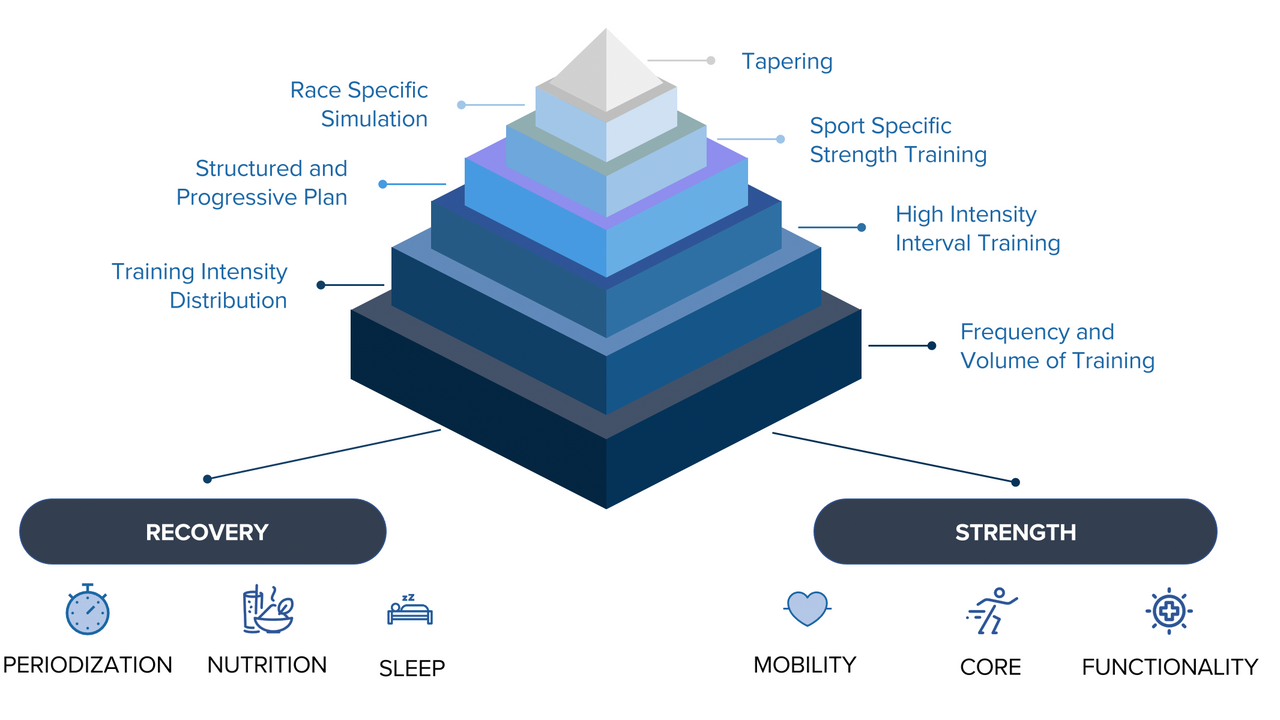
My long-distance triathlon training philosophy is grounded in the 'Hierarchy of Long-distance Triathlon Training Needs', a series of scientifically-supported components of a well-designed training programme. The Hierarchy is adapted from my colleague Prof. Stephen Seiler's 'Hierarchy of Endurance Training Needs', which was itself adapted from Maslow's famous 'Hierarchy of needs. This provides a firm basis for both our 1:1 and Endure IQ Training Squad athletes. It’s a method that works, tried and tested!
You can see my 'Hierarchy of Long-distance Triathlon Training Needs' below, which is from the Modules and content of our course on Training Programme Fundamentals, LDT102. This is for coaches and athletes who want to take their understanding of training programming to the next level. This blog will provide a brief background on the Hierarchy and introduce the pyramid's supporting features. Whilst these supporting structures aren't necessarily the fundamental training concepts, they ar...
The 2022 World Ironman Triathlon Championship in St George Utah: What happens when racing at modest altitude?

In this blog, I am going to discuss a topic that has always been of interest to exercise physiologists and those involved in endurance sport: altitude. As I’m sure you are aware, altitude has the potential for profound effects on endurance sport performance. This is certainly an area of interest with the Ironman World Championships this year being held in Utah; with many of my professional and Endure IQ Training Squad athletes competing. Utah sits at a modest altitude of ~1000 m, but is this enough to have an effect on our performance? And is any specific preparation required?
I will do my best to break down the basics of altitude for you, although I should acknowledge that altitude is such a big topic within our field that I cannot possibly include everything in one blog, but let’s give it a go! :).
A physiological look at altitude
Okay, so first, why – physiologically speaking – is altitude so important? At sea level, the atmospheric pressure is ~760 mmHg. As altitude increases a...
